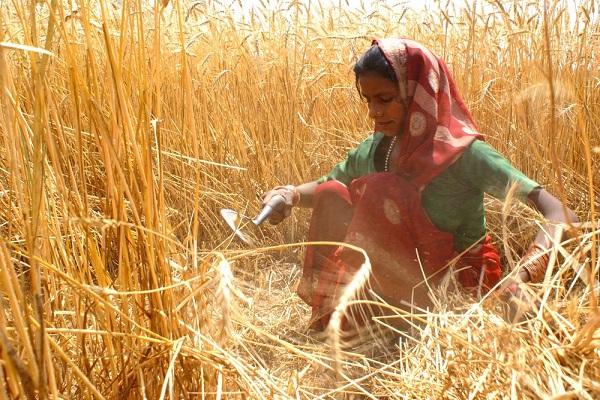India: Rabi 2022-23: Increase in wheat sowing marginal, shows government data

Even though farmers have surpassed last year’s acreage under wheat, the increase in sown area in the 2022-23 Rabi season has been only marginal — by 0.4 per cent.
The total sown area under the wheat crop was 34.3 million hectares (mha) as of February 3, 2023. This was a 0.13 mha increase from 34.1 mha during the corresponding period of 2021-22, according to data released by the Union Ministry of Agriculture and Farmers Welfare on February 6.
The area has seen an increase of 3.7 mha compared to the normal area (average of last five years) under the crop.
While the increase has been steady, the government has been eyeing a bumper crop to consider lifting the ban on its export. Higher output would also ease some of the inflationary pressures on wheat.
The Centre announced a ban on wheat export on May 13, 2022, amid a spike in global wheat prices and a dip in domestic government stocks due to yield loss in the wheat crop. The crop recorded a drop in productivity due to the heatwave in March in the states of Punjab, Haryana, Uttar Pradesh and Madhya Pradesh.
Sowing of wheat, the main Rabi crop, begins in October and harvesting starts from March / April. Rajasthan, Maharashtra, Bihar, Uttar Pradesh, Chhattisgarh, Gujarat, Jammu and Kashmir and Assam were the states with higher wheat-sown areas, according to the data.
Less area was reported from Madhya Pradesh, Jharkhand, Punjab, Haryana, Himachal Pradesh, West Bengal, Uttarakhand and Karnataka.
The data also showed a higher acreage in rapeseed and mustard crop, indicating that wheat farmers might have shifted their agricultural area to mustard this time.
The trend can be seen in some of the states like Madhya Pradesh, Punjab and West Bengal, where farmers have covered less area under wheat.
Area sown under mustard increased by 7.4 per cent — to 9.8 mha in 2022-2023 from 9.1 mha in the 2021-2022 crop year.
An increase in the area of mustard, a key oilseed crop, was crucial for boosting domestic oilseed production and reducing the country’s dependence on imported edible oil.
India imports around 56 per cent of the edible oil it consumes annually. Of the 44 per cent it produces domestically, mustard has the highest share of 39 per cent, followed by soyabean at 24 per cent and groundnut at seven per cent.
However, some of the crops have been damaged due to frost and incessant rainfall in Rajasthan, the largest producer of mustard and it was left to be seen how high the actual production output will be.
Meanwhile, the total area of Rabi (winter) crops was recorded at 72.06 mha, a jump from 69.7 mha in 2021-22. The highest contributor to this increase was rice, followed by mustard. Rice sowing increased by 32 per cent — from 3.5 mha in 2021-22 to 4.62 mha in 2022-23.
Read also
Wheat in Southern Brazil Impacted by Dry Weather and Frosts
Oilseed Industry. Leaders and Strategies in the Times of a Great Change
Black Sea & Danube Region: Oilseed and Vegoil Markets Within Ongoing Transfor...
Serbia. The drought will cause extremely high losses for farmers this year
2023/24 Safrinha Corn in Brazil 91% Harvested
Write to us
Our manager will contact you soon



